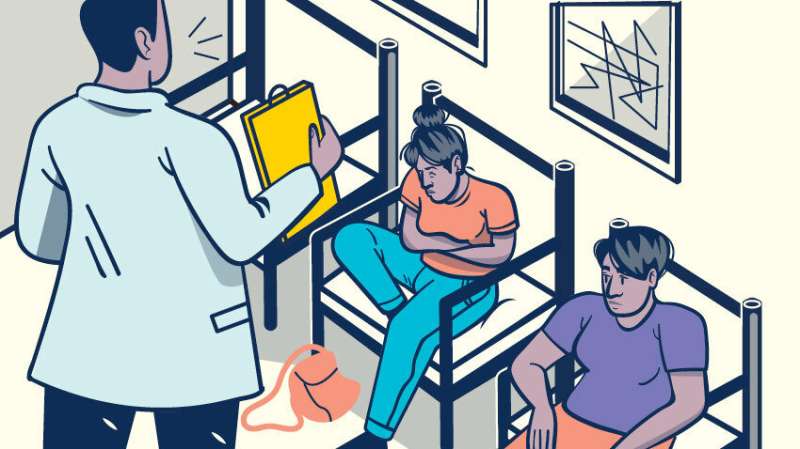
Fibroid symptoms, such as heavy menstrual bleeding and abdominal pain, are increasingly driving women to the emergency room.
In fact, tens of thousands of women were seen annually in the emergency department for the condition, which involves benign growths in the uterus, over a 12-year period.
But only 1 in 10 of these visits led to a hospital admission, suggesting that many cases may have been managed in an alternative, non-urgent health setting, according to recent Michigan Medicine research.
“Fibroids are often a chronic disease, so we have opportunities to treat this through established care with a trusted health provider. Yet, we’ve seen a big increase in women using the emergency room for fibroid care,” says senior author Erica E. Marsh, M.D., chief of the division of reproductive endocrinology and infertility at the Center for Reproductive Medicine at Michigan Medicine Von Voigtlander Women’s Hospital.
“Our study suggests that patients are potentially using the emergency department for care that could and should be obtained in a long-standing trusted environment with a healthcare provider.”
Researchers analyzed more than 487 million emergency visits by women ages 18-55 between 2006 and 2017. The number of ED visits for fibroids among this age group more than doubled during the study period, up from 28,732 to 65,685 visits.
Meanwhile, hospital admissions for these types of visits decreased from about 24% to 11%, according to the study in Obstetrics & Gynecology‘s The Green Journal.
Study findings also reinforced that fibroid care is among the costliest types of ED care, which has been estimated to be generally twice as expensive as other visits among similarly aged women. This is likely to due to imaging studies and other tests to address bleeding.
Over the study period, median ED visit charges for fibroids more than doubled, with the average charge more than $6,000 per visit and a total of $500 million during 2017.
Many of these patients were likely appropriate candidates for outpatient imaging, which potentially could have saved significant costs and resources, Marsh says.
“We should be focused on interventions that improve access to outpatient care for this group of women in order to help mitigate unnecessary, costly ED utilization,” Marsh says.
Emergency department visits for fibroids were highest among women who were aged 36-45 years (about 45%) and with lower incomes. Women who came to the ED for bleeding-related issues were also 15 times more likely to be admitted.
Marsh notes that while bleeding symptoms should be addressed right away, there are several interventions that can help manage bleeding through regular office visits. Hospital admission was least likely for uninsured patients who came to the ED with fibroid symptoms.
“The apparent disparity in likelihood of admission based on insurance type is concerning and certainly warrants further study,” Marsh says.
“We must constantly call out and investigate disparities in care.”
Improving equitable fibroid care
Uterine fibroids are the most common benign gynecologic condition in the U.S., affecting up to 70% of all women by age 50 and a disproportionate number of African Americans. Although the majority of fibroids are asymptomatic, between a quarter and half of patients will experience symptoms, most commonly heavy menstrual bleeding and pelvic pain or pressure that can be disruptive to daily life.
Fibroids are also the leading cause of hysterectomies, which is the surgical procedure involving removal of the uterus.
Many potential factors may help explain the ED trends highlighted in the new study, Marsh says. It could be that patients are using the ED because they don’t have a primary healthcare home or trusted relationship with an outpatient provider for their gynecological care.
Many women may also delay treatment for uterine fibroids because they think their symptoms are “normal” or are unaware of what types of non-surgical treatments are available.
Insurance gaps and access barriers may also be issues.
“We need to better understand gaps in fibroid care and why so many patients are turning to the ED to receive care for a condition that could be managed in the outpatient setting,” Marsh says.
“We have a diverse team looking at these data to identify opportunities to re-envision care for women with fibroids and barriers we can reduce to improve their care in the outpatient setting.
Source: Read Full Article
